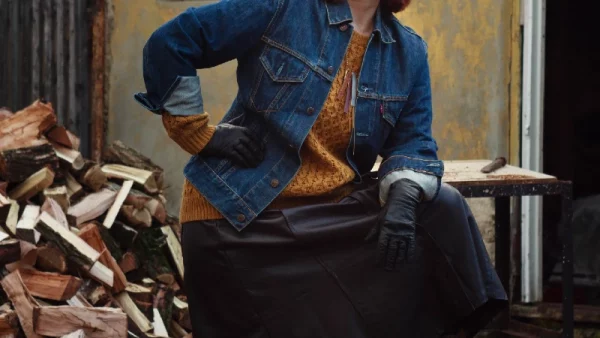Disclosure: This post may contain affiliate links, meaning we get a commission if you decide to make a purchase through our links, at no cost to you. Please read our disclosure for more info.
Last Updated on September 23, 2021 by Steal the Style
Winter is around the corner and a pair of warm gloves are a must! Exposed fingers will feel the chill without adequate protection. There are many types of materials to choose from, but old-fashioned sheepskin gloves still reign supreme. Here is why.
Sheepskin is a natural/breathable material prized for its insulating warmth. It’s also naturally water-resistant and has been used to make protective coverings in cold climates for centuries. Robust and hard-wearing, sheepskin can make various winter apparel and home furnishing products.
In This Post:
Sheep And Man Have a Long History
Sheep have been around for thousands of years. They have been raised and herded by humans throughout recorded history. Among the first animals domesticated by man, they were cultivated for their meat, milk, and skins.
The ancestor of today’s domesticated sheep originated from ancient Mesopotamia (present-day Iraq, Iran, and Syria). These ancient flocks flourished and were crucial to the survival of communities in Mesopotamia, Europe, and Asia. Recent scientific evidence also indicates that the ancestors of modern mountain sheep lived in the highlands of Ancient Tibet.
Today, humans breed sheep on every continent except for Antarctica. Australia has become the world’s largest sheep breeder, producing about 32 percent of the total world’s wool.
The Use Of Sheepskin
Sheepskin is ideal for use in cold and rugged environments. Transformed into apparel, it has helped human’s brave extreme temperatures in the iciest and most tough climates. DNA testing of ancient clothing revealed that the 1500-year-old European mummy called “Iceman” was wearing a sheepskin coat.
Early adventurers climbing Mount Everest in the Himalayan mountains relied on sheepskin to keep their feet safe from frostbite. WWII Aviator pilots counted on the insulation and comfort of sheepskin jackets. Their plane cockpits were uninsulated with temperatures that could drop below zero with increased altitude.
Winter sports enthusiasts, throughout modern history, have depended on sheepskin, shearling, and wool to keep them warm and dry during their exploits.
Sheepskin In Fashion Today
Since its humble beginnings as practical and protective clothing, sheepskin has steadily gained worldwide popularity as a luxury material. It is used in many ways in mainstream fashion, from small decorative trims to luxurious full coats. It is in high demand for winter apparel, especially in climates of extreme cold.
It’s, most notably, popular in aviator-style jackets, slippers, hats, and gloves. Sheepskin apparel and accessories can be relatively inexpensive if you factor in how long-lasting the material is.
Sheepskin typically has a suede side that faces outward. The natural fleece lining faces inward towards the skin. Longer fleece can be slightly rougher to touch, but shearling is incredibly soft and toasty. Shearling is the skin from a sheep that was recently shorn. It makes the most luxurious of sheepskin gloves.
Sheepskin gloves can come in bright colors, but the most popular are classic colors of black, brown, tan, and camel. A pair of sheepskin gloves can be a good investment that can last for many years if cared for properly.
Caring For Sheepskin Gloves
Properly caring for sheepskin gloves can help them stay in excellent condition for years. You may find that, perhaps, you will never need to wash them, especially if they are black or brown.
If the entire glove is soiled, then handwash the whole glove in a basin of lukewarm sheepskin soap and water. Sheepskin soap is more gentle than regular detergent and won’t damage the skin.
Dry them by gently pressing them with paper towels, to remove as much moisture as possible. Allow the gloves to air dry the rest of the way, naturally.

